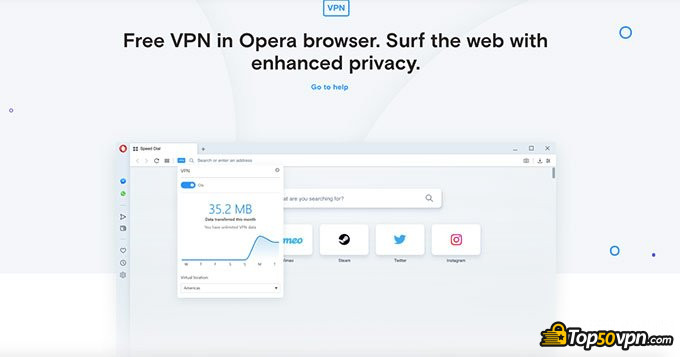

In our tests, the total speed loss with Opera VPN was relatively small.

Opera VPN is one of the fastest VPNs out there. At the bottom, Opera will show you the current IP address through the VPN. Below you will see your bandwidth usage for the week and menu for selecting a connection location. In the VPN menu window, you can easily enable and disable the VPN connection with the one-button toggle. Clicking this icon will bring up the full VPN menu. Once you've enabled this feature in the advanced settings, you'll see a VPN icon on the far left side of Opera's address bar. To enable Opera VPN through Opera browser's settings, you'll have to find the controls under Advanced Settings under the Privacy and Security tab. Enabling a VPN is easy, but it will be difficult for many users to find. One problem is that a VPN is activated through advanced browser settings instead of an easy-to-see button or switch. While there aren't many VPN-specific interfaces, as it's just a small part of the larger browser, clearly, everything is well integrated and as nearly intuitive as possible. VPNs are available in Opera browsers on many platforms, including mobile devices. You need to enable it through advanced browser settings, but there's really nothing more to do. Opera VPN is embedded in the Opera web browser. Jurisdiction: Not clear (Norway via Opera or Canada via SurfEasy).Operating systems: Windows, macOS, Linux, Android.Speed: 302 Mbps (Tested on 1Gbps connection).

Let's learn to sign more through the following article to make your own decision. With all that in mind, the question arises: Is Opera VPN still worth using? The answer is not simply yes or no. The servers Opera uses are owned by a VPN company in Canada, but everything else about the connection is more like a basic web proxy than a VPN. It's actually a proxy that looks like a VPN. Whatever the reason, you may be disappointed to learn that Opera VPN is not a VPN at all.


 0 kommentar(er)
0 kommentar(er)
